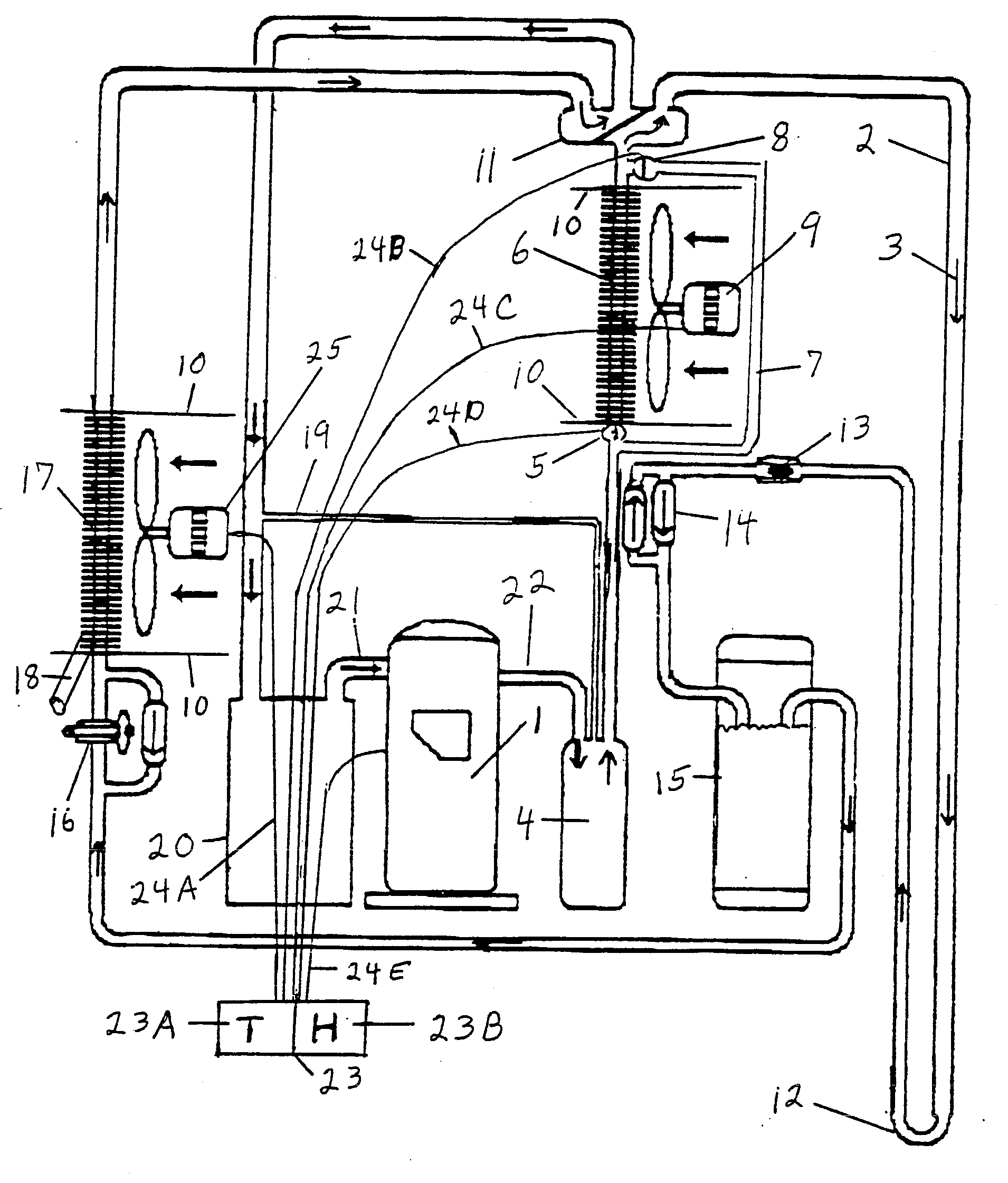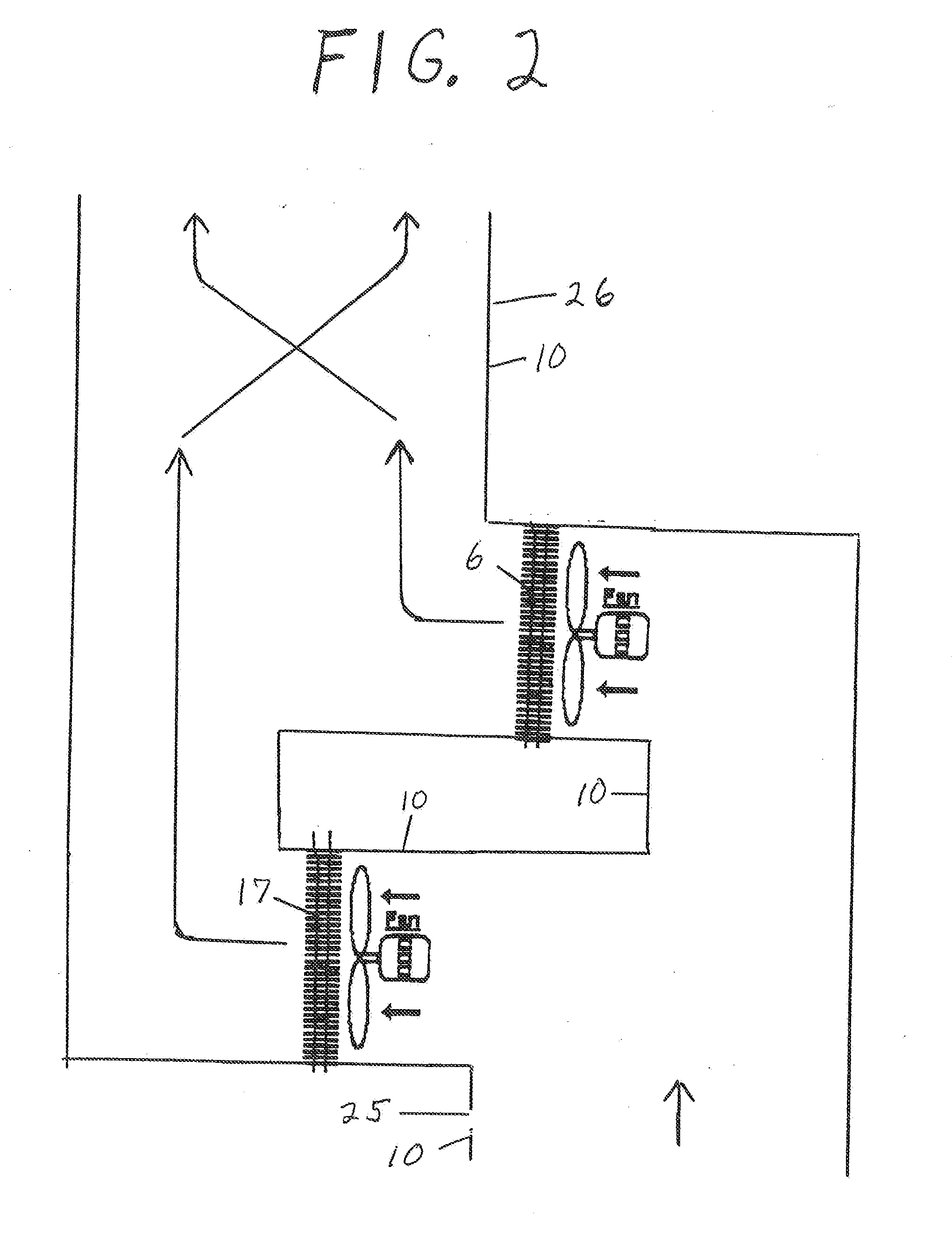Heat Pump Dehumidification System
a heat pump and dehumidification technology, which is applied in the field of improved heat pump dehumidification systems, can solve the problems of only removing humidity, reducing comfort levels, and affecting the operation of heat pumps, so as to reduce heat transfer, enhance cooling/dehumidification/heating, and achieve the effect of convenient operation
- Summary
- Abstract
- Description
- Claims
- Application Information
AI Technical Summary
Benefits of technology
Problems solved by technology
Method used
Image
Examples
Embodiment Construction
[0046] The following detailed description is of the best presently contemplated mode of carrying out the invention. The description is not intended in a limiting sense, and is made solely for the purpose of illustrating the general principles of the invention. The various features and advantages of the present invention may be more readily understood with reference to the following detailed description taken in conjunction with the accompanying drawings.
[0047] Referring now to the drawings in detail, where like numerals refer to like parts or elements, there is shown in FIG. 1 a side view of a simple version of a deep well direct expansion geothermal heat pump system, operating in a dehumidification mode.
[0048] A refrigerant fluid (not shown) is transported, by means of a compressor's 1 force and suction, throughout the system and to / from various system components by means of refrigerant transport tubing 2. The directional flow of the refrigerant fluid within the refrigerant trans...
PUM
 Login to View More
Login to View More Abstract
Description
Claims
Application Information
 Login to View More
Login to View More - R&D
- Intellectual Property
- Life Sciences
- Materials
- Tech Scout
- Unparalleled Data Quality
- Higher Quality Content
- 60% Fewer Hallucinations
Browse by: Latest US Patents, China's latest patents, Technical Efficacy Thesaurus, Application Domain, Technology Topic, Popular Technical Reports.
© 2025 PatSnap. All rights reserved.Legal|Privacy policy|Modern Slavery Act Transparency Statement|Sitemap|About US| Contact US: help@patsnap.com



